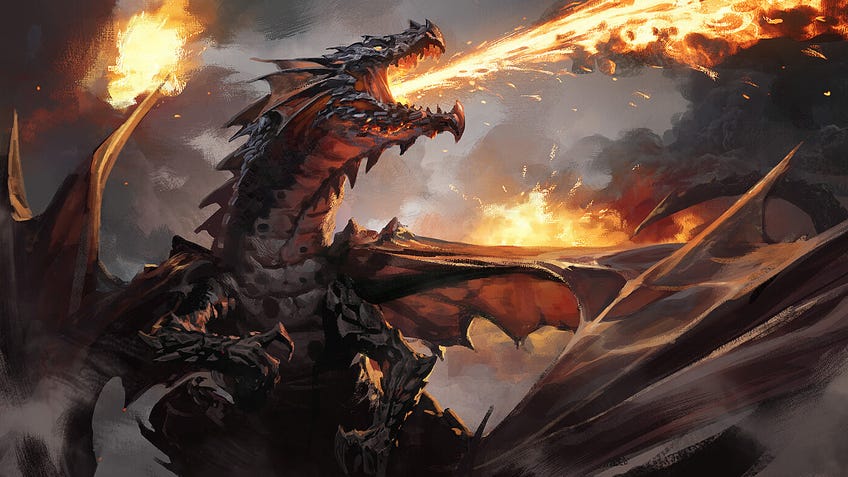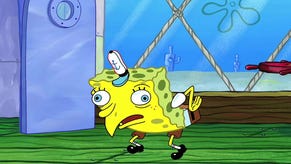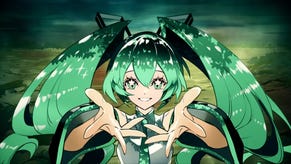How to play Magic: The Gathering: A beginner's guide
Everything you need to get started with MTG as a beginner, from how to play, what to buy first and how to do a draft.
Learn how to play Magic: The Gathering and find everything you'll need to get started as an MTG beginner, including what to buy first, an explanation of the different card types (including the legendary planeswalkers) and how many cards you'll need to conquer your foes.
How to play Magic: The Gathering
- What is Magic: The Gathering?
- Is Magic: The Gathering still popular?
- How to play Magic: The Gathering
- Is Magic: The Gathering easy to learn?
- What do you need to play Magic: The Gathering?
- How many cards do you need to play Magic: The Gathering?
- What should I buy first in Magic: The Gathering?
- How do you use a planeswalker?
- How do you play a booster draft MTG?
- What is Magic: The Gathering Game Night?
What is Magic: The Gathering?
Magic: The Gathering is a trading card game - also known as a collectible card game - originally created by designer Richard Garfield and released by Wizards of the Coast in 1993. Widely considered the first trading card game, the game typically sees two players compete to defeat their opponent first by spending mana to play creatures, spells and other items and abilities.
Players can customise their deck before each battle, choosing cards from their library and - depending on the format - the current legal pool of sets and expansions. More than 20,000 different cards have been released for Magic: The Gathering since it first released more than 25 years ago, with over 20 billion cards printed between 2008 and 2016 alone.
Some of MTG’s most popular cards often see reprints in new sets, while other cards considered too powerful can be banned or restricted in certain formats to keep the game’s competitive scene fair. The sets permitted for tournament play in the Standard format periodically change to include only the four most recent sets released for the game, an action known as rotation. The sets allowed in other formats depend on the format itself. Of course, some of them aren't in games because they're prohibitively, ridiculously expensive.

Is Magic: The Gathering still popular?
Since 1993, Magic: The Gathering has spawned literally thousands of cards and countless playing methods. An estimated 20 million people play MTG around the world, making it one of the most widely-played trading card games of all time.
It’s also a cultural tour de force, the first collectible card game. Everything from the Pokémon and Yu-Gi-Oh! trading card games, to digital card games like Hearthstone have their roots in MTG’s innovative collectible booster packs and simple-but-deep duelling gameplay.
And that’s no wonder, because Magic: The Gathering is an excellent game. It marries social gaming, the themes and artwork of a fantastical multiverse, and the tactics and hardline strategy of something closer to chess.
Even better, publisher Wizards of the Coast has ensured that it’s easy to play socially all across the world, with most local tabletop shops holding Friday Night Magic events weekly for newcomers and veterans alike, as well as playing online via its digital incarnation Magic: The Gathering Arena.
That said, the series has collected so many products over its 25 year history - including more than 15,000 different cards - that it can be near-impossible to work out exactly how to start if you’re a beginner.
Here, we’ll be outlining the basics of how Magic: The Gathering works, what to buy to get started and where to move onto once you’ve grasped the basics.
So whether you want to play online or off, as a pair or in a group, here is how to get playing the Magic: The Gathering card game.
How to play Magic: The Gathering
Imagine you’re the grand battle commander (stupid voice and hat optional), and your creatures are your frontline. Any monsters you have on the table can defend you, taking damage in your stead. As well as creature cards, you'll also have an array of spells, artefacts, enchantments and more. Everything is powered by land, a coloured energy, or mana, if you will.
The aim of the game is to kill the other player(s). You each start with 20 health points, which are typically tracked using a 20-sided dice, familiar to d20-wielding Dungeons and Dragons 5E players.

Mechanically speaking: you each have a 60 card deck (although the number of cards in a deck can change depending on what Magic: The Gathering format you're playing). This deck might be made up of one type of ‘land’ or colour theme - like Red, Black, White, Green and Blue. More advanced Magic: The Gathering decks can include any combination of colours, such as Red/Blue or Black/Green.
Both of you will draw a hand of random seven cards at the start. If your starting hand looks bad (for example, you’ve not drawn any ‘land’ cards), you can take a ‘Mulligan’, which lets you discard your hand and draw a new set of cards, but reduced down to six.
Once you’ve decided on your hand, you both then continue drawing cards with each round of play.
In its simplest iteration, MTG cards are split into three types: lands, spells and creatures. Just to emphasise, these are the most basic cards. More advanced decks include things like planeswalkers - mighty wizards with special abilities and their own health pool.
At the start of every turn, you’ll need to lay down land cards to power anything else you need. The more powerful the card, the more mana it’ll require to run. Some cards require more than one type of mana, often in specific colours.
As such, games usually start with small units like goblins or fire kitties and gradually progress onto players laying down gigantic dragons and mythical horrors.
The land cards are split into five different Magic: The Gathering mana colours: Red, Green, Blue, White and Black. Think of it as your juice; every unit in the game needs it.
Any monster or spell you want to ‘summon’, will ‘tap’ your mana. When a card is ‘tapped’ it is turned 90 degrees to the side, to make it clear that it’s in use. All cards can only be ‘tapped’ once per round. Creatures and spells also get ‘tapped’ in this fashion, but for different purposes. For example, a creature gets ‘tapped’ when it attacks, meaning it can’t block on the next round.
Beginner decks are built around one type of mana, but as you progress you can combine different mana to summon more unique units. Over time, players often opt learn how to build a Magic: The Gathering deck of their own - meaning a customised arsenal of units.
Imagine you’re the grand battle commander (stupid voice and hat optional), and your creatures are your frontline.
The creature cards are straightforward enough to read, displaying their defence and attack stats, what’s required to summon them and any special abilities they might have.
It’s similar with spell cards, except some of them are 'instants’, meaning they can be used anytime - such as in response to another player’s move. This is where the bluffing element of Magic: The Gathering comes to the fore, as you can use some spells to boost your battlefield control while you're being attacked.
In essence, you draw random cards from your deck, lay down mana and decide how to use that mana.
It’s a real mix of strategy with a dash of luck, although obviously the better built your deck the luckier you’re going to be.
Is Magic: The Gathering easy to learn?
Absolutely, anyone can get to grips with the basic rules after a few matches - not just strategy gamers! MTG has a range of starter sets both online and off that guide you through the game - starting with simple creatures and spells, before moving onto planeswalkers and more complex cards. It's very easy to learn how to play Magic: The Gathering, as you can start with simple pre-made card sets before advancing onto making your own deck.
In addition, you can find places to play Magic: The Gathering via the official Wizards of the Coast locator, which tells you what shops are running events. Every week, Friday Night Magic is run in stores and other locations across the world.
These social events are a great way to enjoy the game socially, and also eke out the rules with more experienced players. Staff at the locations are often happy to help you out, perhaps even playing a few hands with you to get you orientated.
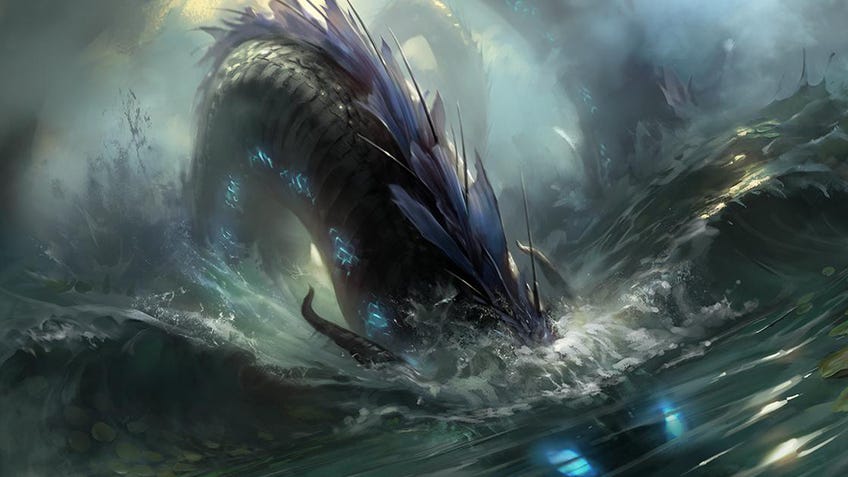
What do you need to play Magic: The Gathering?
First off, there's plenty of ways to get started with MTG completely free. For years, numerous shops have been offering Magic ‘Welcome Packs’ which give you a sample 60-card deck – one deck for each of the five magic elements. Head out to your local store to see if you can nab one of these. Or you can head to Magic: The Gathering Arena, which will bestow you free cards as you play matches.
However, to learn how to play Magic: The Gathering on the tabletop, you'll need a starter deck, such as the duel decks outlined below, which will have everything you need to get started. Accessories wise, this will include a pair of d20 dice, which serve as a way to track life - when it's wiped, you lose. As the game gets more advanced, you'll need tokens - some of these come in sets, however d6 dice can also serve as fine tokens too.

How many cards do you need to play Magic: The Gathering?
The standard rule of thumb is 60 cards, with a limit of four of any one particular card - which covers all types of card. In events and in Magic: The Gathering Arena, you'll need a minimum of 60, plus an optional sideboard of 15 cards which you can switch out and in between matches. However, if you are playing a limited event, such as a booster draft, you'll only need 40 cards. Lastly, the Magic: The Gathering Commander sets - slightly more advanced decks based around one big card - feature 100 cards.
What should I buy first in Magic: The Gathering?
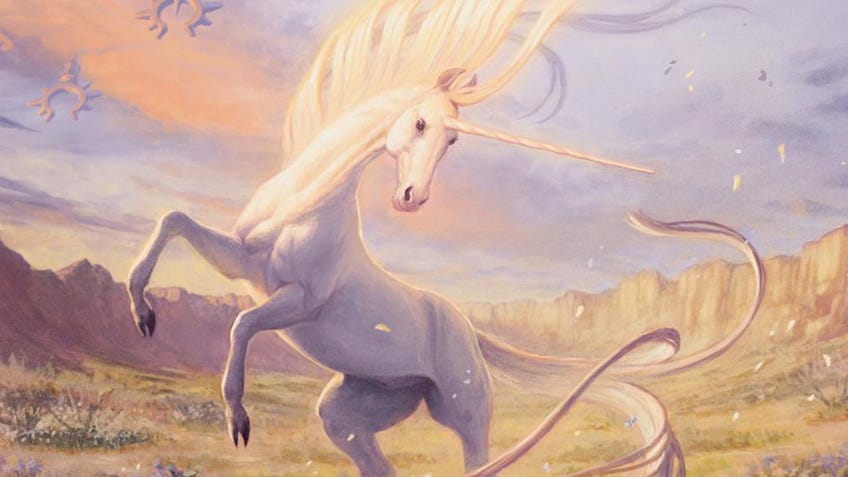
If you know someone who’s up for learning to play with you, you can’t go wrong with the Magic: The Gathering Core Set 2020 Spellslinger Starter Kit. This has absolutely everything you need to get a game going, and comes in at under a tenner. With this set, you can start playing straight away with minimal input.
This includes two 60-card mono-coloured decks, one for each of you. In this edition one deck is Red-themed, meaning tons of dragons, goblins and hefty firepower; while the other is White and allows you to command beautiful yet ever so deadly angels.
The White cards make for a far tricksier deck then the Red, and a good punt for players that prefer plotting over wild destruction. You’ll also get a code that’ll activate the decks on Magic: The Gathering Arena - providing a useful way to build up both your physical and digital collections.

Even better, both packs come with their very own holographic card - meaning a Big Bad Boss-style beast for the both of you to deploy.
The starter set also includes ‘life counters’, namely two chunky 20-sided dice that track your health throughout the game.
There is also a rulebook, and a quick-start guide - which will take you both through the first few rounds of a battle in a pleasingly clean and swift way. It’s a pretty clear outline, and uses actual cards in the deck to clarify its points.
Lastly, these two beginner decks are perfectly capable of being built up into larger ones right from the off, for if you eventually get round to learning how to build a Magic: The Gathering deck.
How do you use a planeswalker?

Once you’ve mastered the basic rules and decided which element you’ll be wanting to play, it’s time to wield more power in the 60-card planeswalker decks. A planeswalker essentially is a cross-dimensional magic-user with a unique set of abilities that can do all sorts of wild things on the battle field. These main characters play a big part in Magic: The Gathering’s ongoing lore. In terms of gameplay, it’s sort of like having another player sit beside you.
To be fair you could start immediately with one of these but, honestly, progressing from a basic deck to a planeswalker is an easier learning curve.
Planeswalkers come in sets of one and two, depending on which ones you get. Like MTG's starter packs, they tend to correspond to one element - meaning all the other cards in the deck operate off of the same mana.

They not only have a raft of special abilities, but get their own hit counters and are treated as separate to both yourself and the line of defence.
You’ll recognise some cards here from the starter packs, but they also feature plenty of new ones that are more powerful.
Overall, these decks give you a bit more versatility and mechanical crunch, but are still very simple to pick up. Plus, adding planeswalkers onto the field really ups the ante when it comes to strategy.
How do you play a booster draft MTG?

Now, you're ready to learn how build a Magic: the Gathering deckYou can use card booster packs to try out the latest Magic: The Gathering sets, and expand a starter set at minimal cost. Alternatively, you can pool together with other players and set up a sealed draft event - a very competitive way to play. For that, you'll need three booster packs per person and ideally eight players, but you can essentially draft with as few as two. You open the packs, shuffle them together, and pass the cards to each other until you each have a 40-card deck. You can also add any number of lands to this deck as you go.
Booster packs typically contain 15 randomly selected cards and are based in one of the many Magic: The Gathering expansion themes. Typically, they are split into four types: one rare, ten commons, three uncommons, and one basic land.
Current popular Magic: the Gathering themes include the greek mythology inspired Theros: Beyond Death, the Grimm fairy-tale themed Throne of Eldraine and cards from the 2020 Core Set. In addition, expansion Guilds of Ravnica draws from a world that has also been adapted into a sourcebook for Dungeons & Dragons 5E.
Some booster packs provide mixed mana, so bear in mind that not every card will match your chosen scheme. Others are split up by ‘theme’, meaning they’re all guaranteed to be a certain mana colour.
If you want to spend all the money (or get together for a draft), thematic decks often come in beefy 10-pack sets. If not, treat yourself to a couple of boosters in your preferred theme and enjoy that sweet foil opening goodness.
What is Magic: The Gathering Game Night?

As well as its Commander decks with accomadate up to four players instead of the usual two-player, the Magic: The Gathering Game Night lets up to five people play. And unlike the Commander sets, it's designed to be used out-of-the-box by complete beginners.
As well as being surprisingly portable, it includes five 60-card decks, five life trackers, counters (which can be used to power up creatures) and one rulebook.
Now that you’re up to speed with the basics of how to get started with Magic: The Gathering, check out our guide on how to build a Magic: The Gathering deck for beginners.
